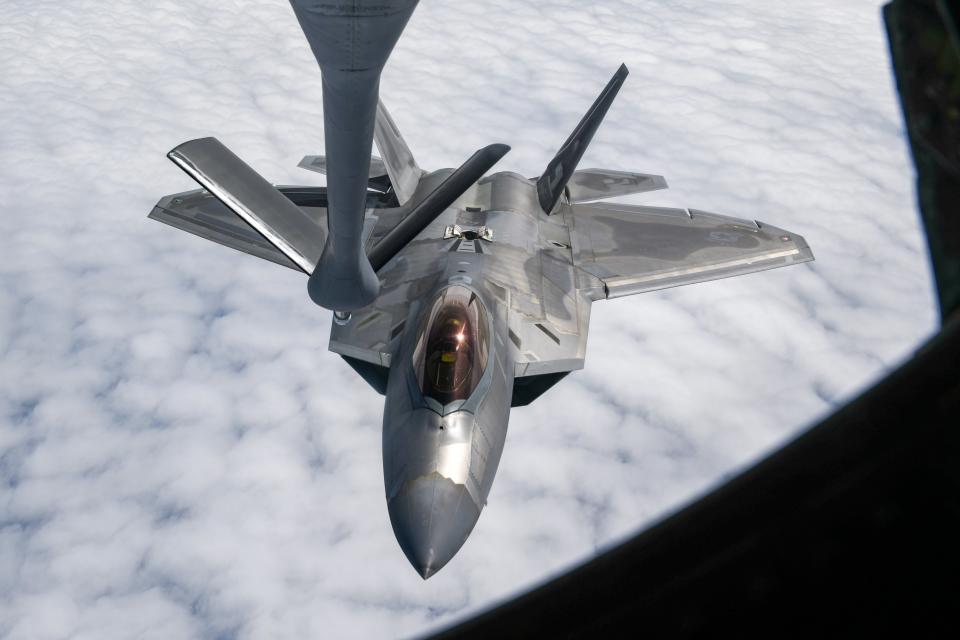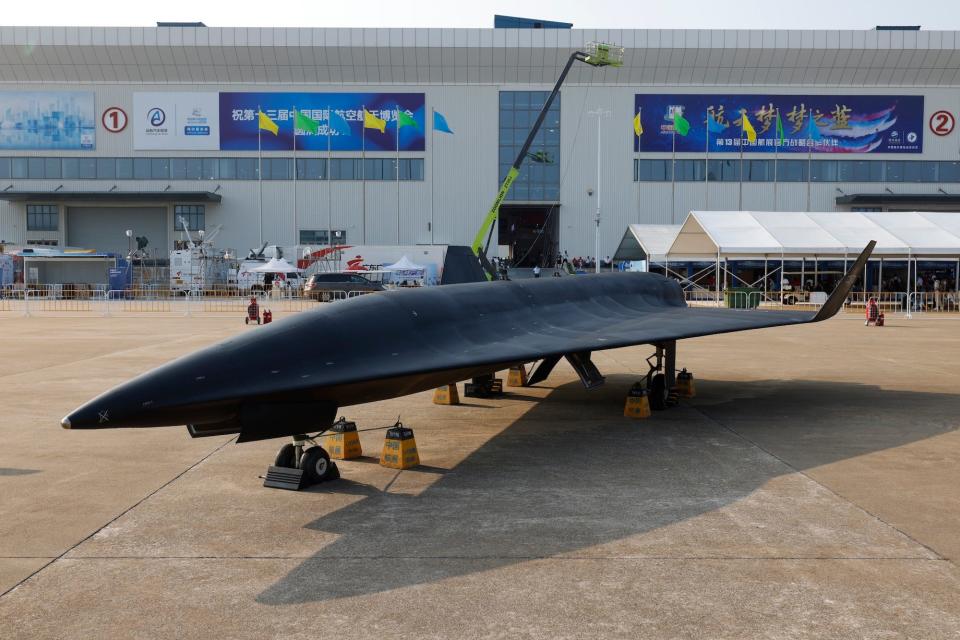Japanese fighters tracked a Chinese supersonic drone spying on its bases
A Chinese supersonic spy drone was intercepted by Japan over the East China Sea.
The WL-10/WZ-10 drone is a reconnaissance/attack drone with electronic warfare capabilities.
The drone's flight path indicates it was flying near a Japanese base key to US airpower in the region.
Japan intercepted the Chinese supersonic WL-10/WZ-10 drone over the East China Sea for the first time on Monday.
The drone, which appears to mainly serve as a reconnaissance and electronic warfare platform with some strike capabilities, was flying near Japanese air defenses and a key base hosting US airpower.
Japan's Joint Staff Office, which oversees ground, maritime, and air self-defense forces, released a statement on Monday confirming the interception of the Chinese WL-10, or WingLoong-10, drone. China also appears to designate the drone the WZ-10.
The office said this was the first time the aircraft was spotted in an airspace violation. Japanese fighter jets responded to the drone, monitoring its flight.
令和6年5月27日(月)中国のWL-10偵察/攻撃型無人機x1機が、東シナ海上空を飛行し、#航空自衛隊 #南西航空方面隊 の戦闘機を #緊急発進 させ対応しました。隊領空侵犯措置においてこの機体を確認したのは初めてです。#スクランブル pic.twitter.com/cJSBEA2kym
— 防衛省統合幕僚監部 (@jointstaffpa) May 27, 2024
According to the office's post, the WL-10 drone's flight pattern showed it traveling in the East China Sea north of Taiwan and near Japan's Okinawa prefecture, a grouping of southwestern islands in the area. It's home to multiple Patriot Advanced Capability-3 surface-to-air missile defense systems, as well as the Kadena Air Base.
Located in Okinawa, Kadena is a key hub for US airpower in the Pacific. Most recently, US 18th Wing and Japan Air Self-Defense Force aircraft conducted bilateral exercises at both Kadena and Naha Air Base from May 13-17 as part of an annual exercise "to enhance interoperability between US forces and host nation partners."
Japanese F-15J Eagles and US F-22A Raptors were involved.

China unveiled the WZ-8 reconnaissance drone during a military parade in 2019. The drone looked strikingly similar to a US drone that crashed into China's southwestern Yunnan province in 1971. The WZ-8, about 37 feet long with a 22-foot wingspan, was reported by Chinese media to be capable of flying 160,000 feet at speeds as fast as Mach 6.
US intelligence documents leaked last April revealed that China has "almost certainly" established its first operational WZ-8 unit. One document from the leak claimed that one of the drone's missions was to conduct high-altitude reconnaissance flights of the South Korean coast and Taiwan using "electro-optical" cameras and sensors and synthetic aperture radars to map territory at night or in low visibility.

The WZ-10 spotted by Japan appears to be a variation of that drone model, likely larger than the WZ-8 in length and wingspan. The WZ-10 appears to also host electronic warfare capabilities, per The Aviationist, and like the WZ-8, could be capable of being modified to launch strikes.
Japan's news of the WZ-10 flight comes just days after China conducted massive, two-day military drills surrounding Taiwan. The exercises were a joint military effort partially in response to the inauguration of Taiwan's new president. They were also a show of force, identified by experts as a clear rehearsal for some sort of assault or blockade.
Read the original article on Business Insider


